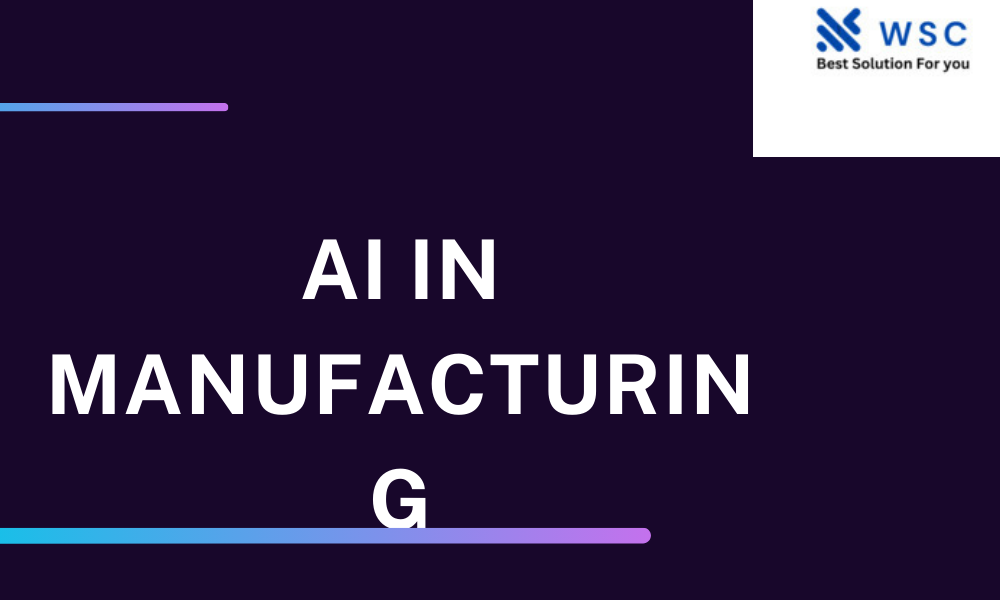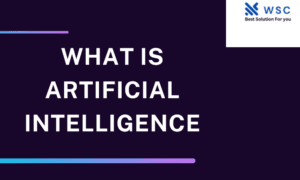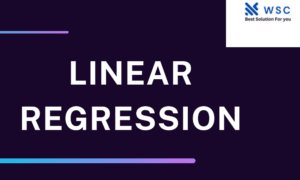In today’s fast-paced world, innovation is the driving force behind progress. One of the most transformative innovations of our time is the integration of Artificial Intelligence (AI) in the manufacturing industry. Artificial intelligence in manufacturing has not only streamlined production processes but has also opened new horizons of possibilities. In this article, we will embark on a journey to explore the fascinating realm of AI in manufacturing, from its inception to its current applications and future potential.
Table of Contents
- Introduction: A Revolution on the Assembly Line
- Understanding AI and Its Role in Manufacturing
- The Birth of AI in Manufacturing
- AI-Powered Quality Control
- Enhancing Efficiency with Predictive Maintenance
- AI in Supply Chain Management
- Human-Machine Collaboration: Cobots in Manufacturing
- The Eco-Friendly Side: AI and Sustainability
- AI-Powered Product Customization
- Challenges and Concerns in Implementing AI in Manufacturing
- Future Outlook: The Promising Landscape of AI in Manufacturing
- Conclusion: A New Era in Manufacturing
- FAQs about AI in Manufacturing
Understanding AI and Its Role in Manufacturing
What is AI, and How Does It Fit into Manufacturing?
Artificial Intelligence, commonly known as AI, is the simulation of human intelligence processes by machines. It involves the use of algorithms and computational power to analyze data, recognize patterns, and make decisions. In the context of manufacturing, AI is a game-changer. It acts as a digital brain, guiding machines in performing tasks that were once exclusive to human workers.
AI-driven systems in manufacturing can interpret vast datasets in real-time, making it possible to optimize production, enhance quality control, and predict maintenance needs.
The Birth of AI in Manufacturing
The journey of Artificial intelligence in manufacturing began with the realization that repetitive and mundane tasks on the assembly line could be automated. It was the birth of industrial robots, which laid the foundation for the integration of Artificial intelligence in manufacturing. These early robots were programmed to perform specific tasks, but with advancements in AI, they now have the ability to adapt and learn.
AI-Powered Quality Control
Improving Quality and Consistency
Quality control is paramount in manufacturing. AI systems are now equipped with computer vision, which enables them to inspect and assess products with precision. This technology can detect even the smallest defects, ensuring that every item that leaves the assembly line meets the highest standards of quality and consistency.
Reducing Human Error
Human error is a part of life, but in manufacturing, it can lead to costly defects. AI systems don’t get fatigued, bored, or distracted. They can tirelessly monitor and evaluate products without the risk of oversight. This not only saves money but also maintains the reputation of the company.
Enhancing Efficiency with Predictive Maintenance
The Cost-Saving Power of Predictive Maintenance
Machinery breakdowns can cause substantial downtime and financial losses. Artificial intelligence in manufacturing takes a proactive approach by predicting when a machine might fail. By analyzing data from sensors and past performance, AI systems can schedule maintenance just in time, preventing costly breakdowns.
Extending the Lifespan of Equipment
Regular maintenance is key to extending the lifespan of equipment. AI helps in this regard by ensuring that maintenance is performed exactly when needed, not too early and not too late. This optimized approach not only saves money but also reduces unnecessary wear and tear on machinery.
AI in Supply Artificial intelligence in Manufacturing: The Future Unleashed Chain Management
The Logistic Revolution
Managing a complex supply chain is no easy task. AI simplifies this by optimizing routes, managing inventory, and predicting demand. It ensures that goods reach their destinations efficiently, reducing delays and costs.
Inventory Management
AI can monitor stock levels and reorder materials automatically. It eliminates the guesswork and helps in maintaining the right balance between overstocking and running out of supplies.
Human-Machine Collaboration: Cobots in Manufacturing
A New Era of Collaboration
Collaborative robots, or “cobots,” are designed to work alongside human employees. They are equipped with sensors that enable them to stop or slow down when a human enters their workspace. This ensures safety and efficiency in tasks that require both precision and human judgment.
Efficiency and Flexibility
Cobots are highly adaptable, making it easy for them to switch between different tasks. Their flexibility adds to the efficiency of the production line, especially in industries with frequently changing requirements.
The Eco-Friendly Side: AI and Sustainability
Reducing Environmental Impact
AI can optimize energy consumption and minimize waste. For example, it can adjust the operation of machinery based on real-time energy prices, reducing costs and environmental impact simultaneously.
Sustainable Product Design
AI helps in the creation of eco-friendly products by providing insights into material choices and design considerations that reduce environmental impact.
AI-Powered Product Customization
Meeting Individual Needs
Mass production can’t always meet the unique preferences of consumers. AI allows for personalized product manufacturing, from customizing the color of a product to altering its features to meet individual needs.
Faster Production of Custom Items
AI can adapt to various customizations efficiently, ensuring that customers receive their tailored products without significant delays.
Challenges and Concerns in Implementing Artificial intelligence in Manufacturing
Cost of Implementation
While Artificial intelligence in manufacturing offers numerous benefits, the initial investment can be significant. Companies need to weigh the costs against the potential long-term gains.
Workforce Adaptation
As manufacturing evolves with AI, the workforce may need to learn new skills to operate and maintain these systems. Training and adaptation are necessary for a smooth transition.
Future Outlook: The Promising Landscape of Artificial intelligence in Manufacturing
The integration of Artificial intelligence in manufacturing is far from reaching its peak. As technology continues to advance, we can expect even more remarkable developments in the industry:
AI in Design
AI will play an essential role in product design, making it more efficient and innovative. It can generate design ideas based on market trends and customer preferences.
Smarter Factories
The concept of “smart factories” will become a reality, where machines communicate with each other, making real-time decisions for a seamless production process.
Improved Sustainability
AI will further enhance sustainability efforts by optimizing resource usage, reducing waste, and developing greener manufacturing processes.
Enhanced Human-Machine Collaboration
Cobots will become more prevalent, working side by side with humans in an even wider range of industries.
AI in Quality Control
AI’s role in maintaining high-quality standards will expand, with systems becoming even more precise and capable of identifying intricate defects.
Conclusion: A New Era in Manufacturing
In conclusion, the integration of AI in manufacturing is nothing short of a revolution. It has streamlined processes, improved quality, and set the stage for a more sustainable and innovative industry. As we move forward, the future of manufacturing is set to be smarter, greener, and more efficient, thanks to AI. Embracing this technology is not an option but a necessity for those who want to stay competitive in the ever-evolving world of manufacturing.
FAQs about AI in Manufacturing
- What are the key benefits of AI in manufacturing? AI in manufacturing offers benefits like improved quality control, predictive maintenance, enhanced supply chain management, and sustainable practices. It also enables product customization and human-machine collaboration.
- Is AI in manufacturing a cost-effective solution? While the initial investment can be substantial, Artificial intelligence in manufacturing often leads to significant cost savings in the long run. It reduces downtime, prevents costly breakdowns, and optimizes processes.
- Are there any risks associated with AI in manufacturing? Implementing Artificial intelligence in manufacturing comes with challenges, such as the cost of implementation and the need for workforce adaptation. Companies must carefully consider these factors.
- What does the future hold for AI in manufacturing? The future of Artificial intelligence in manufacturing is promising, with advancements in design, smart factories, sustainability, and human-machine collaboration. AI’s role in maintaining quality standards will also expand.
- How can a manufacturing company start integrating AI into its processes? Companies interested in integrating AI can start by identifying areas where AI can have the most significant impact, investing in appropriate technologies, and providing training for their workforce to adapt to the changes.
In the end, AI in manufacturing is a dynamic force that’s reshaping the industry for the better. It’s not just about automating processes; it’s about creating a more efficient, sustainable, and innovative future. As technology continues to advance, the role of AI in manufacturing will only become more significant, ensuring that the world of manufacturing remains at the forefront of progress.
Check our tools website Word count
Check our tools website check More tutorial




